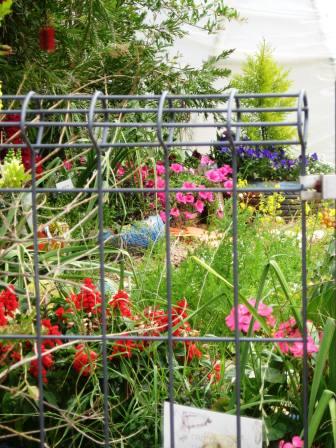 In my home away from home, Israel, I am lucky enough to be living in a model neighborhood in North Tel Aviv that has three schools within a one quarter-mile radius. The one that I walk by every day, literally around the block from me, is a pre-school. It’s nothing fancy but is considered to be one of the most exceptional (and difficult to be accepted to) schools in this area.
In my home away from home, Israel, I am lucky enough to be living in a model neighborhood in North Tel Aviv that has three schools within a one quarter-mile radius. The one that I walk by every day, literally around the block from me, is a pre-school. It’s nothing fancy but is considered to be one of the most exceptional (and difficult to be accepted to) schools in this area.
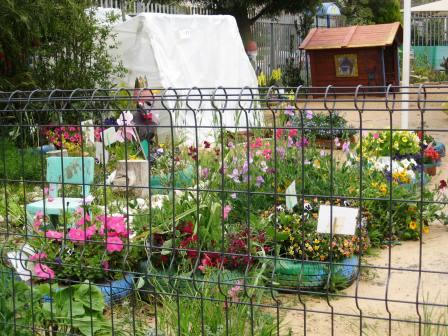 I can only assume from the festive, rambunctious garden out front that this is quite a special setting for kids to come to 6 days a week. Outside of a wonderful place for the children to romp about and view from inside, it is clear that these gardens are used as a teaching tool. It makes me think how rewarding a child care career and education development must be for the teachers, who get to watch the children learn and become passionate about nature, and grow themselves!
I can only assume from the festive, rambunctious garden out front that this is quite a special setting for kids to come to 6 days a week. Outside of a wonderful place for the children to romp about and view from inside, it is clear that these gardens are used as a teaching tool. It makes me think how rewarding a child care career and education development must be for the teachers, who get to watch the children learn and become passionate about nature, and grow themselves!
A plethora of studies have been done about the effects of edible school gardens on students’ nutrition. Alice Waters, a renowned pioneer in the creation of edible organic gardens had the vision decades ago that when children experienced hands on touching of the soil, planting seeds, observing vegetables grow and then picking them ripe off the vines, that one of the many the results would be that these young people would eat more nutritous meals. She has been a major force behind the Obama administration making the decision to plant a White House Organic Vegetable Garden.
Her creation, Edible Schoolyard describes itself as:
“The Edible Schoolyard (ESY), a program of the Chez Panisse Foundation, is a one-acre organic garden and kitchen classroom for urban public school students at the Martin Luther King, Jr. Middle School in Berkeley, California. At ESY, students participate in all aspects of growing, harvesting, and preparing nutritious, seasonal produce.
Classroom teachers and Edible Schoolyard educators integrate food systems concepts into the core curriculum. Students’ hands-on experience in the kitchen and garden fosters a deeper appreciation of how the natural world sustains us and promotes the environmental and social well being of our school community.”
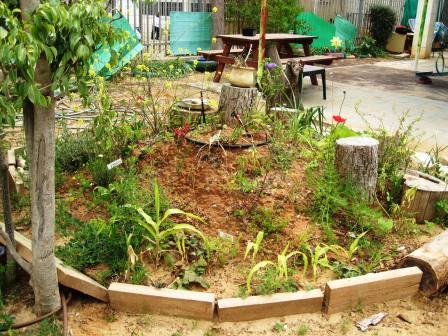 For close to twenty years, I have witnessed (from running an inner city elementary school gardening project) how children who are involved in all forms of gardening develop a greater appreciation of nature as well as choosing to eat more nutritiously. Years later, when several of the students (who were then college aged) called to let me know what an impact the gardening project had made on them, they mentioned that they had modified their eating habits because of what they had experience and learned from that time. And yes, they told me, they were still eating fresh veggies. But they also talked about the awesome feeling of observing veggies and flowers giving birth from seed. They recounted the thrill of being surrounded by beauty, some said, for the first time.
For close to twenty years, I have witnessed (from running an inner city elementary school gardening project) how children who are involved in all forms of gardening develop a greater appreciation of nature as well as choosing to eat more nutritiously. Years later, when several of the students (who were then college aged) called to let me know what an impact the gardening project had made on them, they mentioned that they had modified their eating habits because of what they had experience and learned from that time. And yes, they told me, they were still eating fresh veggies. But they also talked about the awesome feeling of observing veggies and flowers giving birth from seed. They recounted the thrill of being surrounded by beauty, some said, for the first time.
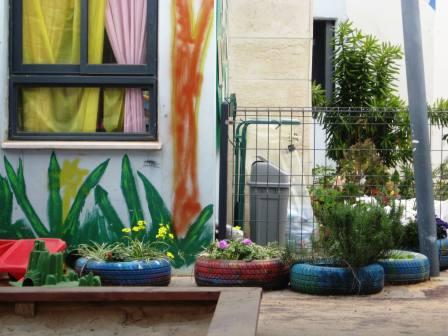 One of the most beautiful sights I ever saw was when a group of thirty plus students from the inner city of Philadelphia got off the bus for a visit and ‘gardening lesson’ at Chanticleer. They quickly started walking around, some at a fast pace with others lingering, eyes as big as saucers, asking about this and that flower. Yet, they stood silently and respectfully when one of the horticulturists taught them how to stake a plant. It was the sight of these kids though, rolling down a steep hill towards the series of lotus filled ponds at the bottom, shouting with glee, which to this day continues to remind me that the beauty of nature and being surrounded by it is one of the greatest gifts we can offer our children: as well as introducing them to what could become a lifelong friend.
One of the most beautiful sights I ever saw was when a group of thirty plus students from the inner city of Philadelphia got off the bus for a visit and ‘gardening lesson’ at Chanticleer. They quickly started walking around, some at a fast pace with others lingering, eyes as big as saucers, asking about this and that flower. Yet, they stood silently and respectfully when one of the horticulturists taught them how to stake a plant. It was the sight of these kids though, rolling down a steep hill towards the series of lotus filled ponds at the bottom, shouting with glee, which to this day continues to remind me that the beauty of nature and being surrounded by it is one of the greatest gifts we can offer our children: as well as introducing them to what could become a lifelong friend.
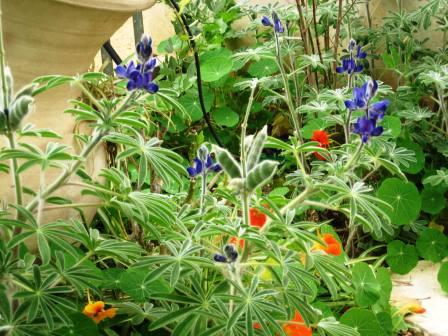 Each time I walk by the neighborhood pre-school, I stop and gaze, marveling at the magnificent playfulness and whimsy of what has been created. Nothing complex but filled with love, color, an abundance of different plants, including native wildflowers, edible plants, herbs, annuals, bulbs and who knows what else! Several of the plants are are labeled. A teaching garden? You bet! A fun place to be, digging in the dirt, planting things and watching them grow? Oh yeh!
Each time I walk by the neighborhood pre-school, I stop and gaze, marveling at the magnificent playfulness and whimsy of what has been created. Nothing complex but filled with love, color, an abundance of different plants, including native wildflowers, edible plants, herbs, annuals, bulbs and who knows what else! Several of the plants are are labeled. A teaching garden? You bet! A fun place to be, digging in the dirt, planting things and watching them grow? Oh yeh!
 As impressive as all of the garden vignettes are at this school, the mini-gardens planted in the recyclable tires (along with the recyclable water bottles) grab me the most. It is at moments like these when I think to myself that it’s never too early to teach our children about the importance and appreciation of eating and enjoying fresh vegetables and fruits, of being surrounded by the beauty of nature and caring for our universe.
As impressive as all of the garden vignettes are at this school, the mini-gardens planted in the recyclable tires (along with the recyclable water bottles) grab me the most. It is at moments like these when I think to myself that it’s never too early to teach our children about the importance and appreciation of eating and enjoying fresh vegetables and fruits, of being surrounded by the beauty of nature and caring for our universe.
Any school gardening projects that you wish to share with us , please send your link so that all of us can get on your blog and check it out!
